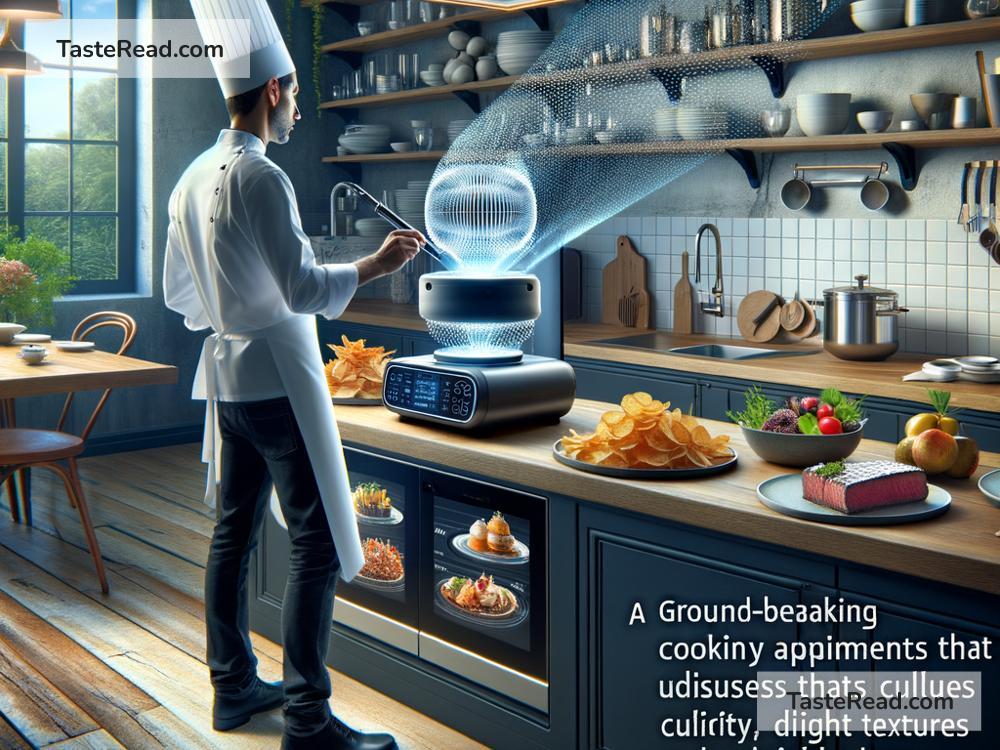The Science of Cooking with Sound Waves: Techniques and Tips
Cooking has always been a blend of art and science—a process where we transform raw ingredients into delicious dishes using heat, time, and seasoning. But did you know that sound waves can also play a role in cooking? This fascinating method, called ultrasonic cooking, uses high-frequency sound waves to cook, tenderize, and enhance food in unique ways. Let’s dive into the science behind this concept, explore some techniques, and share tips to try in your own kitchen.
What Are Sound Waves?
Sound waves are vibrations that travel through air, liquids, or solids. These waves can vary in frequency. Low-frequency sound waves, like bass sounds, create deep vibrations, while high-frequency sound waves produce more rapid, almost imperceptible vibrations.
In ultrasonic cooking, scientists and chefs use high-frequency sound waves to interact with food. These sound waves generate energy that can heat, break down, or change the texture of ingredients. The result? Faster cooking times, more tender meat, and even new ways to extract flavors from food.
How Does Ultrasonic Cooking Work?
Ultrasonic cooking uses devices called ultrasonic transducers or ultrasonic baths. These machines emit sound waves that are so high-frequency, they’re inaudible to the human ear. When food is placed in an ultrasonic machine, these sound waves vibrate at speeds faster than the eye can see. This creates tiny bubbles in liquid, a process called cavitation.
Cavitation occurs when sound waves create high-pressure and low-pressure zones in a liquid. As these zones change rapidly, microscopic bubbles form and collapse. This generates intense energy capable of heating the liquid and exerting pressure on food. It’s this energy that can tenderize ingredients, infuse flavors, or even break down tough parts of food.
Applications of Sound Waves in Cooking
Sound waves aren’t just science-fiction tools; they have real-life applications in culinary experiments, restaurant kitchens, and food manufacturing. Below are some ways ultrasonic cooking is changing the way we prepare food:
1. Tenderizing Meat
Sound waves can break down tough connective tissues in meat to make it softer and easier to chew. This method is faster than marinating or slow cooking, and it doesn’t compromise the flavor of the meat. Some restaurants are using ultrasonic devices to tenderize steaks and other cuts of meat with great results.
2. Infusing Flavors
Have you ever wanted to add more flavor to a dish without waiting hours for it to marinate? Ultrasonic cooking can infuse flavors into liquids or solids in minutes. Imagine a soup where herbs release their full aroma or a cocktail where fruit flavors are rapidly extracted. Sound waves make it possible by shaking the ingredients and speeding up the flavor release process.
3. Making Smooth Textures
Ultrasound machines can puree foods and liquids into incredibly smooth textures. This is especially useful in making soups, sauces, or even fruit juices. By breaking apart particles in the food, sound waves create perfectly blended liquids that are silky and uniform.
4. Cleaning Produce
Ultrasound baths are often used in kitchens to clean fruits and vegetables. The sound waves dislodge dirt, bacteria, and pesticides from the surface without damaging the food.
5. Preserving Food
Some researchers are exploring how ultrasonic waves can preserve food by killing bacteria and microorganisms. This could provide an alternative to freezing or chemical preservatives, keeping food fresher for longer.
Techniques for Ultrasonic Cooking at Home
While ultrasonic cooking is still gaining popularity, some devices are now available for home use. If you’re curious about experimenting, here are some techniques you can try:
1. Tenderize Small Cuts of Meat
Invest in an ultrasonic device or use a handheld immersion wand that incorporates sound wave technology. Start with small cuts of meat like chicken breasts or pork chops. Follow device instructions to apply sound waves for tenderization.
2. Extract Flavor from Herbs
Want to boost a dish’s flavor instantly? Place herbs (like basil or mint) in water or oil and use a small ultrasonic device to extract their essential oils. Use the infused liquid for salad dressings, marinades, or soups.
3. Make Smooth Sauces
Test out the ultrasonic blending effect by preparing a smooth sauce, like tomato puree or hollandaise. High-frequency vibrations will break down particles, resulting in a silky texture.
4. Deep Clean Vegetables
Try using an ultrasonic bath to wash your fruits and veggies. This is especially useful for delicate produce like berries, which can be hard to clean thoroughly using traditional methods.
Tips for Getting Started
Here are some beginner-friendly tips if you plan to explore cooking with sound waves:
-
Start Small: If investing in an ultrasonic device feels intimidating, try finding affordable handheld ultrasonic tools. These can be used for infusions, tenderizing, and blending.
-
Experiment as You Learn: Sound waves cooking requires trial and error. Play around with different foods and techniques to understand how sound impacts texture and flavor.
-
Be Patient: It’s still a relatively new method for home cooking, so stay curious and give yourself time to adapt.
-
Safety First: Always follow manufacturer guidelines to use ultrasonic devices safely. The high energy generated by sound waves should be handled with care.
A New Frontier in Culinary Arts
Cooking with sound waves is an exciting development in food science. Not only does it give chefs new tools to experiment with, but it also opens up possibilities for faster and healthier cooking at home. Whether you’re tenderizing meat, infusing flavors, or creating silky textures, ultrasonic cooking offers innovative ways to elevate your culinary creations.
As we venture further into this field, we’re reminded that science often leads to delicious discoveries. So, stay curious, try out ultrasonic cooking, and let sound waves take your kitchen skills to the next level!


